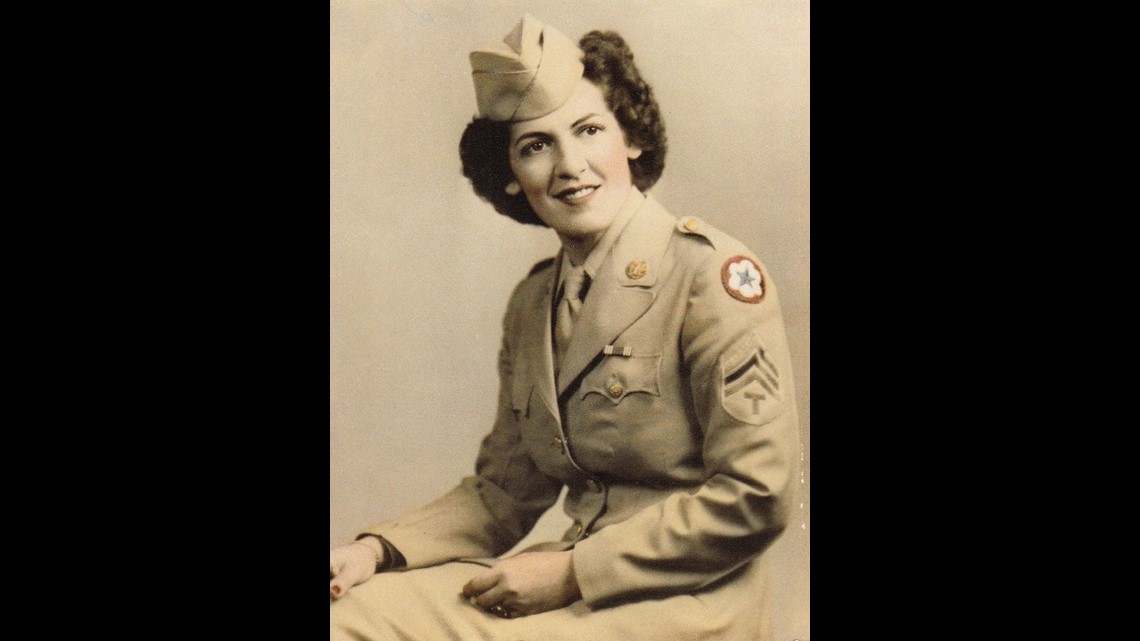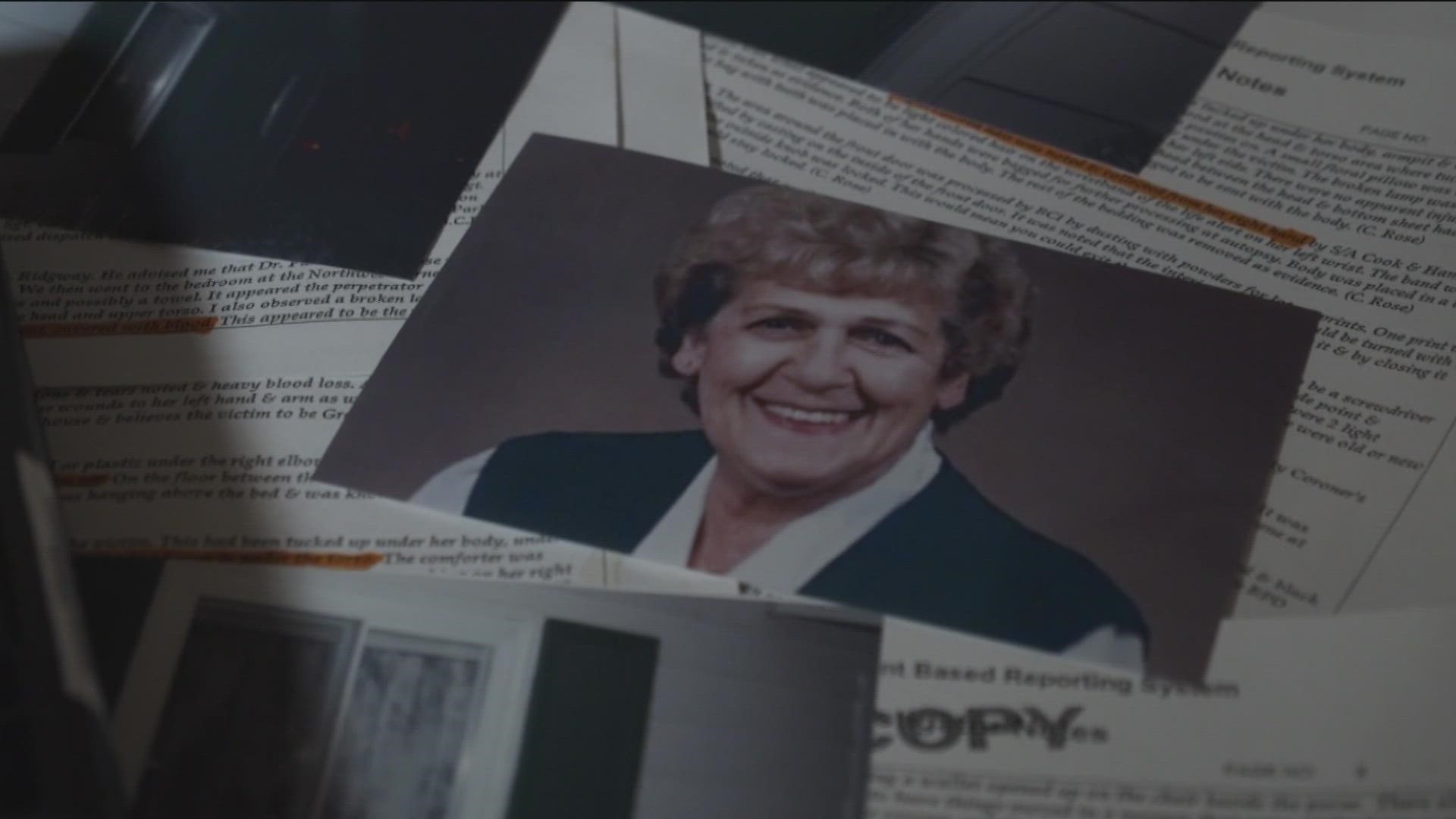BRYAN, Ohio — It’s eerie to hear her recorded voice.
“I was born in Rochester, New York, on April 17, 1918.”
In December 2007, Grace Kennedy sat for an hour-long interview with Bud Fisher, who was collecting interviews for the Library of Congress’ Veterans History Project.
Kennedy was a cryptographer in the Women’s Army Corps, serving at Gen. Douglas MacArthur’s headquarters in the Philippines.
She met him only once.
“We were going up to the office one time, and he had an office up on the third floor that was private,” Kennedy said during her interview. “We were going upstairs in an elevator and along comes a valet. He said, ‘You need to leave the elevator. MacArthur wants to go upstairs.’ I said, ‘Well, he can ride with us. Is that OK with you Jane?’ Sure, she said. He said, ‘You need to leave the elevator,’ so we did.”


Stepping outside the elevator, she came face to face with the general.
“He nodded his head, kind of like, how do you do? And I felt like saying, so?”
You can hear the interview here.
Feisty. Stubborn. Refusing to back down. It’s how friends described her years later. None of them were surprised that she went down fighting when she was murdered in December 2009.
The murder on John Street
In the late afternoon of Dec. 22, 2009, “Mary” (not her real name) brought zucchini squares to her longtime friend, Grace Kennedy.
There was a thick layer of ice and snow in the drive from a recent storm. Grace was 91 years old and often had friends in the neighborhood help with yard work, but the drive had not yet been cleared.
Mary and Grace chatted. Grace mentioned that her knees had been really bothering her lately. She asked Mary to stay for some soup. She was expecting a friend to stop by at 6:45 p.m. to take her to St. Patrick’s Church.
At 7 p.m. the following night, Mary called to check in on her friend and the answering machine picked up. The recorded message was in Spanish. Thinking she dialed the wrong number, Mary called again and got the same message.
Concerned, she went to Grace’s home around 8:30 p.m.. Mail was sticking out of the box by the front door, a worrying sign as Grace would quickly retrieve her mail when it was delivered.
Mary walked around the home. The house was completely dark, something that didn’t make sense. Grace would always leave a light on in the living room, even while she slept.
Mary called her husband, who said she should call the police.
Patrolman Tony Plotts arrived at 8:59 p.m.. He observed the home was completely locked up and Grace did not answer the door. Moments later, Sgt. Ryan Baird arrived and they were able to eventually get into the house through the garage.
As the officers entered the home, they noticed the soup was still on the stove, the range’s fan was running, and the zucchini squares were on the kitchen island. A mug of coffee or tea was on a table in the living room. They found a purse, with its contents dumped on the floor. The door to the entertainment center was open, closet doors were open in the hallway. A walker was positioned outside the bathroom.
In the bedroom, dresser drawers were pulled out, and it appeared a jewelry box and other items on top of the dresser had been searched. A female body was lying on the bed. A smashed lamp with a dented base was found by the victim’s head. Police never publicly identified the murder weapon, but they initially believed it was the lamp, according to a police report.
A crucifix that had been hanging on the wall behind the bed was broken, with a piece lying beneath the woman’s elbow. The rest of it was on the floor, between the nightstand and bed.
Light-colored hair was found in her hand. Defensive wounds were found on her arms. Blankets were wrapped around her face and head, almost appearing to be a remorseful attempt to hide the face. Blood soaked through the blankets.
When the blankets were removed, deep lacerations were found on the right side of her face. The victim was identified as Grace Kennedy. She was the first Bryan homicide victim in 61 years.
The investigation
In the early days of the investigation, 20 people were listed as possible suspects. 11 Investigates is not identifying the suspects because no one has ever been charged in the case. But the list included family members, men with drug histories, neighbors, even elderly friends.
Over the next several months, multiple interviews were conducted by police. Then-Chief Jeff Arnold told Lynn Thompson of The Bryan Times that officials administered seven polygraph tests. Four months after the murder, Arnold said his department had a person of interest. The man failed a polygraph, had a criminal history, and was overheard saying he had killed Grace. But no physical evidence could connect him to the scene and Arnold told Thompson, “We’re not out to make an arrest. Our goal is, and has always been, to get a conviction and see justice done.”
Much of the speculation, then and now, in the community was that Grace was a target of someone strung out on drugs who was looking for easy money.
While the house certainly looked like it had been ransacked in an attempt to find something, her son, Bob, told police that there did not appear to be anything missing. Most interestingly, an envelope filled with money was left undisturbed out in the open.
If the killer was looking for money, they missed an easy opportunity.
Cloud over community
Inside the Williams County Public Library’s Local History Center, there are folders filled with stories about the murder of Grace Kennedy.
Large, bold headlines from The Bryan Times jump out from the folder: “Death not random,” “Death still a mystery,” “Bryan: Be on lookout,” “Death still a mystery.”
It was one of the first stories for Lynn Thompson after arriving at The Times in 2009. His byline dots most of the stories related to the murder.
“Right off the bat we kind of figured it was a personal thing. Nobody in Bryan, Ohio, goes after people like that. It’s not the way we do things,” Thompson said. “Who knows why it happened. She was specifically targeted, for the lack of a better word – for reasons we still haven’t figured out.”
In her John Street neighborhood, many friends who knew her more than a decade ago remain.
“I cried and was very shocked. I think the whole neighborhood was, you know, very concerned,” Michelle Hall said. “For a couple weeks, it was very hard to sleep, but then you just had to say to yourself that Bryan doesn’t have very many murders. We’re a safe community.”
For Stella Kerr, it was an annual tradition to make cookies and take them to Grace before Christmas. In 2009, she didn’t make them, something she still regrets. On the night of Dec. 23, she returned with her mother from a birthday party to a street lined with police cars. It’s a vivid memory.
“You know, she didn't deserve it. Nobody deserves that, but especially a nice sweet old lady,” Kerr said. “I don't know how anyone could do that to her. Her family deserves closure.”
Closure is still elusive for this community of 9,000 residents.
“It’s still a shadow, particularly around the holiday because they never found the guy who did it,” Thompson said. “Because it’s unsolved, it just hangs there.”
Fresh eyes on the case
On Sept. 11, 2020, Ohio Attorney General Dave Yost announced the formation of a state cold case unit to partner with departments on homicides and sexual assaults.
The goal was to bring to bear all of the investigative resources of the Bureau of Criminal Investigation to cases that appeared to be at a dead-end. The state is currently working on about 150 cases. In the past 22 months, 25-30 cases were brought to conclusion, meaning a suspect was charged, a deceased suspect was identified, or it was determined that no more avenues could be explored in investigating the case.
“So our cold case team and BCI include three core elements. It's the investigative side. It's the criminal intelligence side. It's the laboratory side,” Supervisor Roger Davis said from the BCI office on the campus of Bowling Green State University.
Sometimes the unit reaches out to departments to offer support, but more often than not, a department contacts the unit.
In late 2021, the Bryan Police Department reached out for help.
Each case begins by bringing together members with various specialties for a review of the evidence with members of the lead investigative agency, preferably original investigators. The goal is a fresh, unbiased look, to identify evidence that might need retested, suspects who might need re-interviewed, advanced techniques that can be used.
The biggest leap forward in forensic science since the case was initially investigated is the use of familial testing.
“This idea of familial testing and genealogy testing is something that is advancing the field, so you could have DNA from 15 years ago, it went into the CODIS (Combined DNA Index System) database and it never matched to anybody,” BCI Lab Manager Kristen Slaper said. “Now the question becomes, can we use the CODIS database to figure out a first-degree relative of that target profile? Or can we use genetic genealogy to determine a relative and then build a family tree and try to solve the case that way?”
Investigators are also able to build a complete profile with less DNA in 2022 than was needed in 2009. In Grace Kennedy’s case, blood was found that did not produce a complete profile. Can it today? Can DNA be pulled off pieces of evidence that were previously tested or not even tested? Those will be challenges for Slaper’s team.
There is also the possibility that there simply might not be DNA to examine or that DNA samples were all used up during the original testing.
“Fifteen years ago, we may have used all of the extract in order to try to generate a profile from something and therefore there's nothing left,” Slaper said. “That's another reason we do these cold case reviews. Maybe we can go back and reswab the item. Maybe we can take another cutting from that blood stain or that pair of pants or whatever it was to try to get a better profile.”
From an investigative perspective, the cold case unit is a fresh set of eyes that prevents the lead agency from developing tunnel vision, or fixating on just one suspect. Bryan has identified persons of interest over the years, but that’s not enough to get an indictment.
“There are people of interest within her case. Our challenge is to get evidence or be able to bring that to a grand jury or prosecutorial standpoint on what we have within the case file,” Davis said.
The cold case unit has held a review with Bryan investigators. Davis can’t promise his team will solve the case, but he promises to exhaust every investigative avenue in trying.
“I look at it like it's a jigsaw puzzle, but it's like a jigsaw puzzle that that you bought used,” he said. “So not only are you trying to find the corners and finding the straight edges, you're not even sure if all the pieces are there.”
Anyone with information on this case should call the Bryan Police Department at 419-636-4233 or BCI at 855-BCI-OHIO (224-6446).”
And, if anyone wants to submit an anonymous tip, they can do so on the attorney general web site at: https://www.ohioattorneygeneral.gov/Individuals-and-Families/Victims/Submit-a-Tip/Unsolved-Homicide-Tip.aspx.
More on WTOL:

